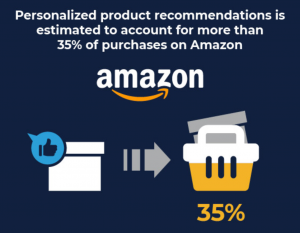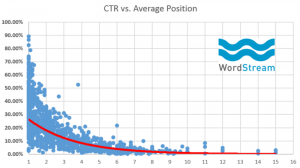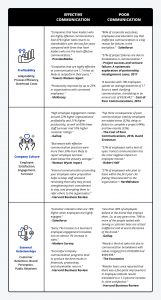
We’re all scared, and we should be. Thousands of people in our industry have lost their jobs, and thousands more may still do so. But it’s not surprising, or ahistorical, or anything other than the same cycle of hubris that high-growth companies has been experiencing for years. Layoffs come seemingly every year or two, after major tech companies like Tesla (2019, 2018), Cisco (2019, 2016, 2014) and Microsoft (2017, 2016, 2015, 2014), as well as startups like Better, suddenly realize that they’ve hired too quickly, or mismanaged operations, and thus have to make “tough decisions” that end with a massive human cost.
Layoffs are also terrible for the company. A Harvard Business Review piece raised two studies, one showing that a menial 1% downsizing would lead to a 31% increase in people voluntarily leaving the company, and another showing that survivors of layoffs have a 41% decline in job satisfaction and a 20% decline in job performance. Layoffs destroy innovation, reducing new inventions by 24% in one cited firm, and another study by the University of Texas found the majority of companies that have layoffs see declines in profitability. While layoffs may be necessary at times, the sheer number of them suggests either a herd mentality or a total lack of strategic hiring throughout the life of many companies.
It’s the same song and dance every time: The tech industry experiences a boom in new investment, sometimes crystallized around a particular industry (the mid-2010s Indiegogo gold rush, or more recently the boom (and bust) in the fintech spend management space, and crypto), everybody assumes nothing bad will ever happen again, and then it invariably does. As tech booms, so does funding, and then hiring, and then layoffs, repeating a cycle that leaves lives damaged and those who failed to strategically evaluate and foster talent in the organization unscathed.
While I can’t speak for specific companies, my theory is that there is a lack of considered and thoughtful management of people, starting at the creation of a role within a company. What does that role do, and who is the right fit? What skills do they need to have, and—crucially—how do you evaluate those skills? And once that (still theoretical) person is hired by the organization, what steps will be taken to evaluate their current talent, their potential for growth, and their actual output? Management theory has been focused heavily on outputs—starting with Drucker’s Management by Objectives (MBO), which eventually became John Doerr’s Objectives and Key Results (OKRs)—but I believe that these concepts are only useful when directly integrated into company structure and hiring itself.
So many of the cold, callous layoffs we’ve seen have been a symptom of corporations that haven’t moved with intentionality in creating and hiring for particular roles. When we decide we’re going to have someone do something at a company, we should be stopping and considering what that would contribute to the company itself, but also what that role’s end output is—and how that role might grow with the person who fills it. And what’s worse is that companies have largely discarded their hiring functions —about 40% of US companies have outsourced most of their hiring process according to research by Korn Ferry—meaning that roles that aren’t thoroughly considered are hired with the same level of disregard for the future.
The net result is an ugly, anti-worker corporate culture, where workers are hired based on their ability to hit the right buttons on an ATS, or through warm introductions—both contributing to a lack of diversity. People are hired based on their ability to tick boxes—culturally or otherwise—for roles that may not be justified when tough times arrive. Tech companies have put so much energy into considering “lean startup methodologies” and other concepts, but these concepts regularly fail to evaluate what a role is, what a role contributes, and who fits said role.
Role-creation, hiring and recruiting in tech has been diluted into a people-based supply chain, one that makes companies weaker and directly hurts workers.
What we need is a new system for tech talent, one that requires companies to be significantly more thoughtful about company structure and hiring, and another that evaluates (and promotes) worker talent.
The New Valley Structure
When a role is created in a startup, especially early on, you’ll find that you’re wearing eight or nine different hats as a necessity. It’s easy to lose one’s way at this point, assuming that things will “just work themselves out” and you’ll “deal with these things when you get bigger.” In reality, you need to start making intentional role-creation and hiring decisions starting with employee one. If you’re wearing many hats, you should consider what those hats are for, and make a plan to eventually hand it off to someone else—and also consider whether said hat is a single role or a role that could be combined with another.
We also need to move beyond resumés as much as we can, and try and create a model to evaluate a candidate’s current talent, their future potential, and make a plan for evaluating these from day one. A person is not a static object that grows linearly, and, for example, someone who’s really great at a role—who has a natural talent at a particular function—should be both grown into a teacher (if they’re good at that too!) and as someone that could help evaluate future roles and hires. This includes (but is not limited to) how companies evaluate someone for a role—would a role-playing exercise make sense? How about a skills-based assessment? Or perhaps a genuine analysis of every position you’re hiring for, identifying the knowledge, skills, abilities and other characteristics (KSAOs) required for the job? While these may seem obvious, deeply understanding the exact things that will position both the candidate and the organization for success is a reliable way to hire and retain the greatest people in tech.
To be frank, you should not be outsourcing your recruiting if your company is below a thousand people. It isn’t about the cost, but the fact that someone outside of your company very likely lacks the nuance to understand why a role was created, and what the “best fit” may be. And those involved in hiring should not just be Human Resources professionals, but people that are active in doing the work that you’re hiring for. If you’re too early to have someone in that role, speak to your investors or advisors, find a subject-matter expert, and compensate them for their time. And do the same for any workers that you draw into the hiring process too.
Finally, companies need to make ways for workers to publicize and evaluate their work in a way that is transparent to both them and their manager/boss. In the creation of a role, you should aspire to create as many measurable units as possible, and create or acquire internal tools for managing and promoting the work of your people. When workers feel like their work is respected, and that they’re making progress, they’re happier— and yes, they will leave, and they will use these measurements of work to get other jobs.
But a system where workers are hired for a role with intention and consideration, a role that is evaluated fairly and transparently with an eye toward their own growth within the company is a system with less layoffs and less human suffering. It is one that breeds better, more diverse and inclusive companies (assuming roles and outputs are regularly interrogated for bias and measured by their inclusivity), stronger relationships between workers and their superiors, and a happier, fairer Silicon Valley.
Tigran Sloyan is the co-Founder and CEO at CodeSignal.
(29)
Report Post







